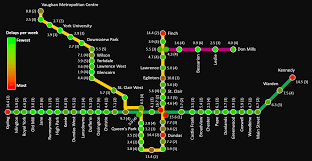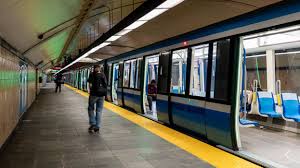Understanding the Current TTC Delays in Toronto

Introduction
Transit delays have become a significant issue for commuters in Toronto, particularly with the Toronto Transit Commission (TTC) faced with challenges leading to increased wait times and disruptions. As one of the busiest urban transit systems in North America, the impact of these delays is felt by thousands of riders daily. Understanding the scope and causes of these delays is essential for users of the service and city planners alike.
Current Status of TTC Delays
As of October 2023, TTC riders are experiencing notable delays across various transit lines. Reports indicate that subway services, particularly on Line 1 (Yonge-University) and Line 2 (Bloor-Danforth), have faced interruptions due to a combination of factors including aging infrastructure, staffing shortages, and increasing ridership. The TTC has acknowledged persistent delays, citing the recent surge in user numbers post-pandemic as a contributing factor. In a data report released last month, the TTC indicated that service levels on some lines were operating at only 80% efficiency.
Causes of Delays
Several key issues have contributed to TTC delays. Firstly, many of the subway cars in operation are over 30 years old and require frequent maintenance. This has led to an increased number of scheduled maintenance checks, which can further exacerbate delays during peak hours. Secondly, the ongoing shortage of operators due to recruitment challenges has hindered the ability to run additional services. Lastly, construction projects across the city, aimed at upgrading the transit infrastructure, have caused detours and adjusted service that, while ultimately beneficial, have temporarily increased travel times.
Measures Being Taken
The TTC is implementing several measures to alleviate these delays. The recent budget proposal includes a $1 billion investment aimed at modernizing aging equipment and expanding service routes. Additionally, the commission has initiated a recruitment drive to onboard new operators, with plans to increase training capacity to expedite this process. The TTC has also started using real-time tracking technology to offer more accurate updates to riders, helping them plan their journeys better amidst the ongoing changes.
Conclusion
The challenges posed by TTC delays highlight the pressing need for investment in Toronto’s transit system. As the city continues to grow and evolve, its public transportation network must adapt to meet the demands of its users. While current efforts to manage TTC delays are promising, ongoing transparency between the TTC and the public will be crucial for fostering trust and ensuring that ridership continues to grow. In the coming months, commuters will be looking for improvements and reliability in their daily commutes as the city works towards a more efficient transit system.









